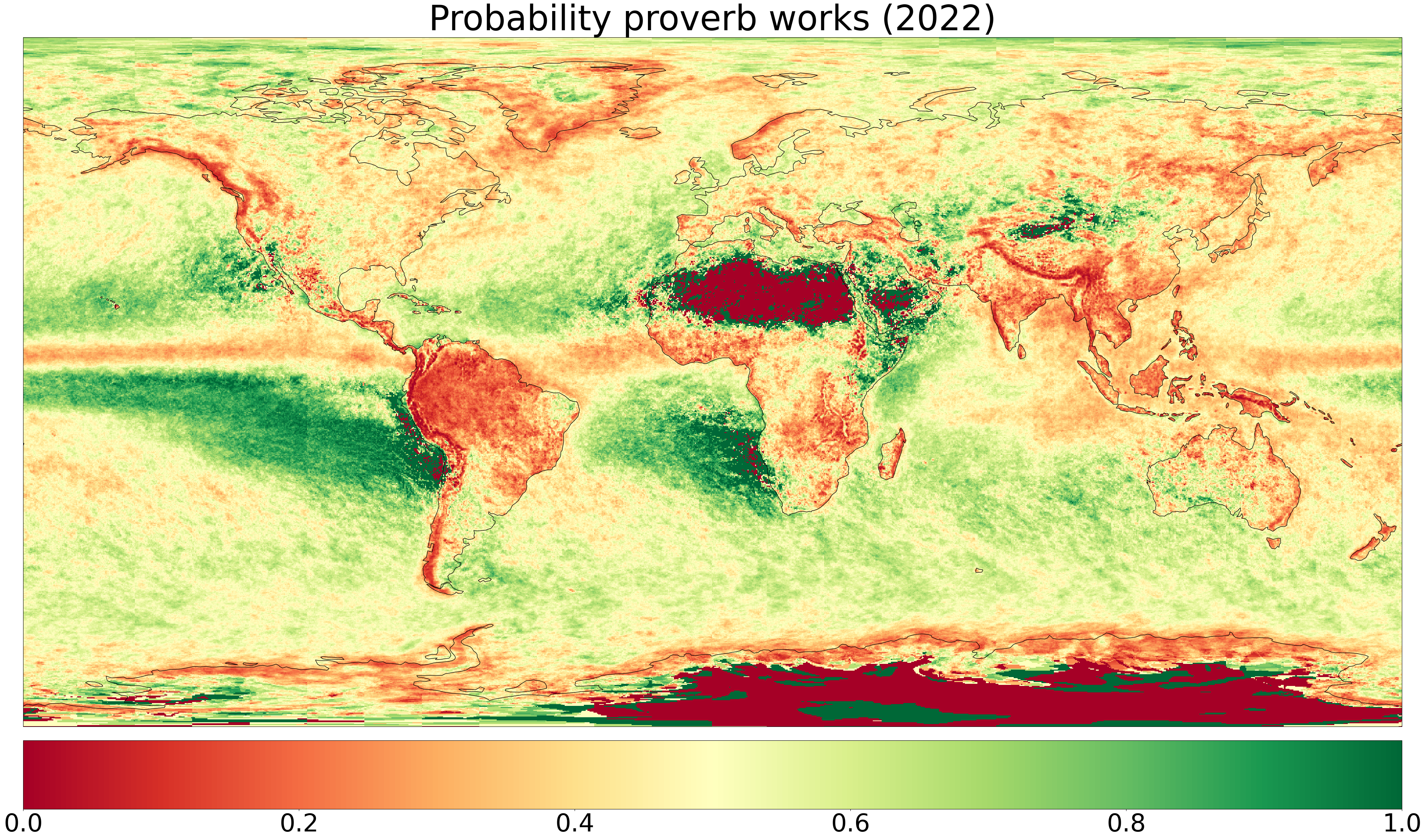Rain before 7, fine by 11

You may have heard this proverb before. It's a British saying based on our changeable weather.
If you live here, you probably noticed that heavy rain will often clear up by noon - or at least weaken considerably.
But how true is this observation really? Grey and rainy days also often stay that way.
I decided to test it for the whole of last year and see how well you would have done applying the proverb. To see how global the proverb was, I decided to see what would happen if you used the proverb at any location on Earth. This used the local 7 and 11 time of course.
Some places receive so little precipitation that you can never apply the rule. Very arid regions like the Sahara Desert and the poles (which could be described as artic deserts) never experience enough for the saying to come in handy.
However, for some places the proverb does indeed work reasonably well. How well depends on how you define "rain" and "fine".
I decided to count any amount of precipitation greater than .1 mm per hour to be rain. Fine was a situation where precipitation was below this (although a definition based on percentage cloud cover could also be valid).
The percentage of the days that the saying worked in 2022 is shown on the map below. The greener the better it worked, the redder the worse.

The saying worked particularly well along the storm tracks in the ocean, where rainy storms blow past. The storms that deliver rain at 7 have already moved along their path by 11, taking the rain with them.
Europe receives about 70% of its rainfall from extratropical storms and the UK is the first to be hit by many of these. As a result, the UK and England in particular, are quite green on the map.
It seems the regions with the least applicability had extreme topography. The two countries where the saying was the least applicable on average, were Nepal and Bhutan in the Himalayas. Your odds of correctly predicting no rain at 11 were 16% and 10% respectively.
As it happens, the place where you would have had the most success in 2022 was the United Arab Emirates, with an 80% chance that your forecast of no rain was correct. Which given the geography of the region is perhaps not so surprising.
Until next time!
This map was generated in Python using ERA5 data from Copernicus. The data had a quarter degree resolution.
Muñoz Sabater, J., (2019): ERA5-Land hourly data from 1981 to present. Copernicus Climate Change Service (C3S) Climate Data Store (CDS).



Comments ()